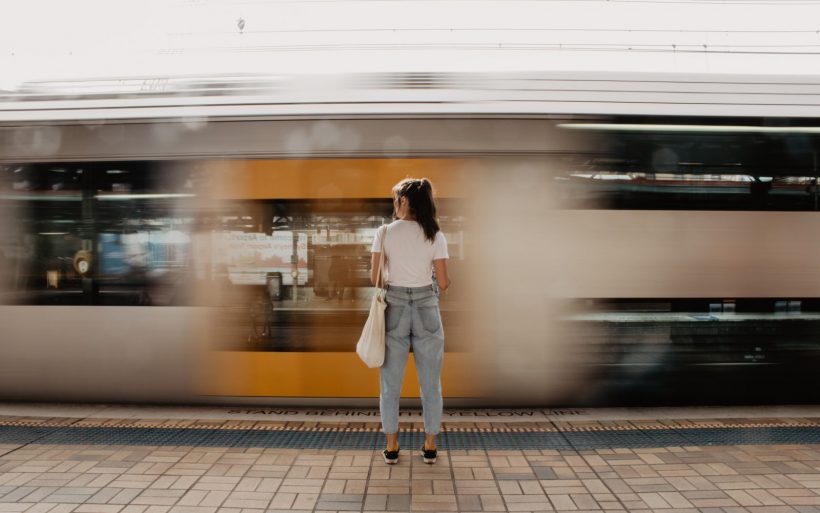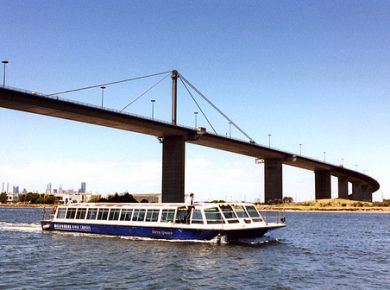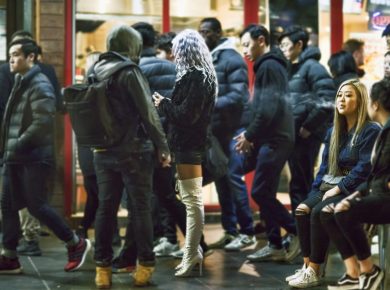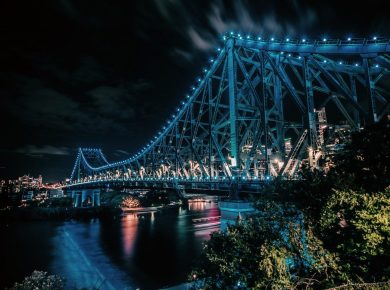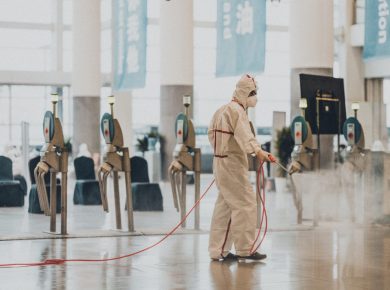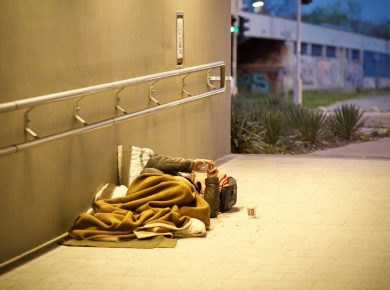Everyone knows that our population is highly likely to double in the next few decades. We have the massive problem of where these people will live and how can we provide services such as schools and hospitals. But perhaps the biggest problem is our transport system. Our roads and rail lines are already congested. In an attempt to manage the situation, the Government is spending tens of billions of dollars on infrastructure. But will this solve the problem? The answer is that some projects will help, while others less so. But most importantly, while infrastructure is important, it isn’t the primary solution to managing Australian cities’ growth.
I think everyone agrees that inner-city freeways are highly problematic, unpopular with locals and, simply feed more traffic into the inner city where the roads are totally congested.
The usual answer is to call for more trains. However underground trains are massively expensive, and only service a fraction of our overall metropolis. Only 15% of us live within 800 m of a station, and only 10% of us go to work by train. Despite having just about the highest level of subsidy for PT anywhere in the world, at around 78c in the dollar, 75% of Melbourne commuters are drivers in a car, and the number is growing rapidly. The ABS data shows us the reason for this: on average car trips to work right across Melbourne are twice as quick as going by public transport, as well as the fact that many of us simply don’t have services that can take us from where we live to where we have to go.
Even if we could, at huge expense, double our train systems capacity in coming decades, we would still only have 10% going to work by train, because our population will have doubled in the same time. That said we still need new public transport, or the percentage will drop even further.
There will be a transport revolution coming as shared autonomous, electric vehicles become the norm. They will be less expensive than Uber or taxis as we won’t have to pay a driver. It will be cheaper than driving your own car: paying thousands of dollars buying a car to only use it for an hour or two a day, and having to find somewhere to garage it. They will become our new public transport. They will be particularly beneficial for the elderly, and much safer.
However even these new vehicles won’t solve the problem of congestion as our population doubles. Doubling the train network won’t help and we simply cannot build enough road space to manage twice as many cars, trucks, trams and bikes.
The answer is not to try to build our way out of congestion, but to change our travel patterns, and this can only be done by where and how we live, and where we locate the activities we need to undertake: our jobs, schools, and how and when we work.
We need to “localise” our city. We need Melbourne to meet our daily needs without the need for excessive travel.
Reducing the frequency and length of travel is easily the most effective way of resolving many of our city’s problems. At the risk of oversimplifying something complex, if we all only travel half as far in our daily commute, Melbourne could cope with twice the population without worsening congestion. However, while governments talk about this, the level of congestion on all forms of transport show us that current approaches are not working.
We need to refocus on where we encourage businesses and jobs…and make them closer to where we all live. To do this we need to both look at measures to encourage travel on uncongested routes and discourage use of congested routes. More people should be able to use “active transport”: bikes and walking but for this to happen we need shorter commuting distances.
While each of these problems can be overcome, the biggest problem is that we’re not talking about the need to travel less to live a great life. We talk about infrastructure and we talk about congestion: we don’t talk about how we should minimise how far we have to travel to do the great things that we want to do.
The solution however while simple in principle, is hard to achieve: it does however have the potential to ease the growing disparity (and house prices) between the rich, well serviced inner parts of our city, and the rest (even though we all pay the bills). It can ease congestion, relieve the financial pressure on government to build new transport projects, and free up time in our daily lives.
One of the World’s most liveable cities?
Melbourne is often touted as one of the world’s most liveable cities, but is this true for all parts of Melbourne or just the expensive inner parts of our city that gain the benefit of excellent services, particularly heavily subsidised public transport, that isn’t readily available to most of us? Are we happy that our city is becoming more segregated…by suburb, with inner city housing only available to the rich, or those who already live there? Finally, how will our liveability survive as we double our population?
The Government is working hard and spending a lot on needed transport projects but ultimately, we know we can’t “build our way out of congestion”. New freeways and rail generate more travel and when the travel is into the CBD or environs, we are encouraging more activity in the area that is already overcrowded and on heavily congested, and incredibly expensive to service. Comparing two great Melbourne projects: the Metro reinforces the primacy of the inner areas by assisting getting commuters into the centre while the excellent Level Crossing Removal Project assists commuting and business movements across the whole of the metropolis.
We need to decide what type of city we want: congested, expensive and inequitable, or a city where all residents can have an excellent, affordable lifestyle.
To achieve this, we need to reduce the distance we travel by having the things we want, particularly jobs, close to where we live.
We can have a better spread of good quality jobs throughout the whole of the metropolis if councils and government make employment areas more attractive to businesses and other large employers by putting in better road and public transport connections, and investing in the services and public spaces within these business areas. This is particularly true of our large job clusters, such as around Monash where there are over 100,000 jobs. But while Monash needs better public transport it also needs the full range of services currently available in the CBD including somewhere to have a decent coffee or meet friends after work.
The opposite also works, bringing people closer to concentrations of jobs by increasing residential densities in or around business or adjoining areas will result in shorter commutes: freeing up capacity by spending less time on the road, bus or train and many will walk or cycle, taking the pressure right off our transport system.
Substantial reductions can also be made by staggering working hours or working from home even if only a day or two a week.
The massive capital cost of transport infrastructure primarily relates to managing the peak hour, and in the peak direction. Why don’t we charge less (or nothing) for freeway or trains that are going away from the CBD in the morning and charge more for the congested incoming movements in in the morning. Congestion pricing is used in many cities and can help businesses to locate in areas where there is less congestion and reduce the pressure on Government to build another inner city mega project.
However, these, and other actions, are not without their difficulties. Councils are conservative in allowing residential and business uses to mix. Residents in areas surrounding business centres, often oppose higher densities, not all jobs are suitable for working from home, some economists place too much emphasis on the fact that CBD jobs are higher paying, and those commuters who are causing the congestion by travelling in peak hour directions in congested areas will resent paying more.
Having bipartisan support for a long term program is essential and both recent Labour and Liberal governments support the principle of localising our city with the 20 minute neighbourhood/city but unfortunately some infrastructure decisions encourage more and more people working in the inner areas, to the detriment of suburban business areas, the State budget, levels of congestion, our lifestyles and increasing the gap between our rich and normal suburbs.
The Government in recent years is placing more emphasis on this with a Minister for Suburban Development supporting other Ministers like the Ministers for Planning, and Public Transport, and some excellent projects which directly support a localised city such as the level crossing program and discussion around the Suburban Rail Loop (despite the many challenging issues this will entail). Some Councils are far more active than others in supporting local business such as Brimbank’s work on the urbanisation of the Sunshine Centre.
The challenge is for the need to localise our city to be better understood by all of us and given priority in planning and infrastructure decisions.
(Peter has recently launched his book “ Breaking Point: the Future of Australian Cities”).
